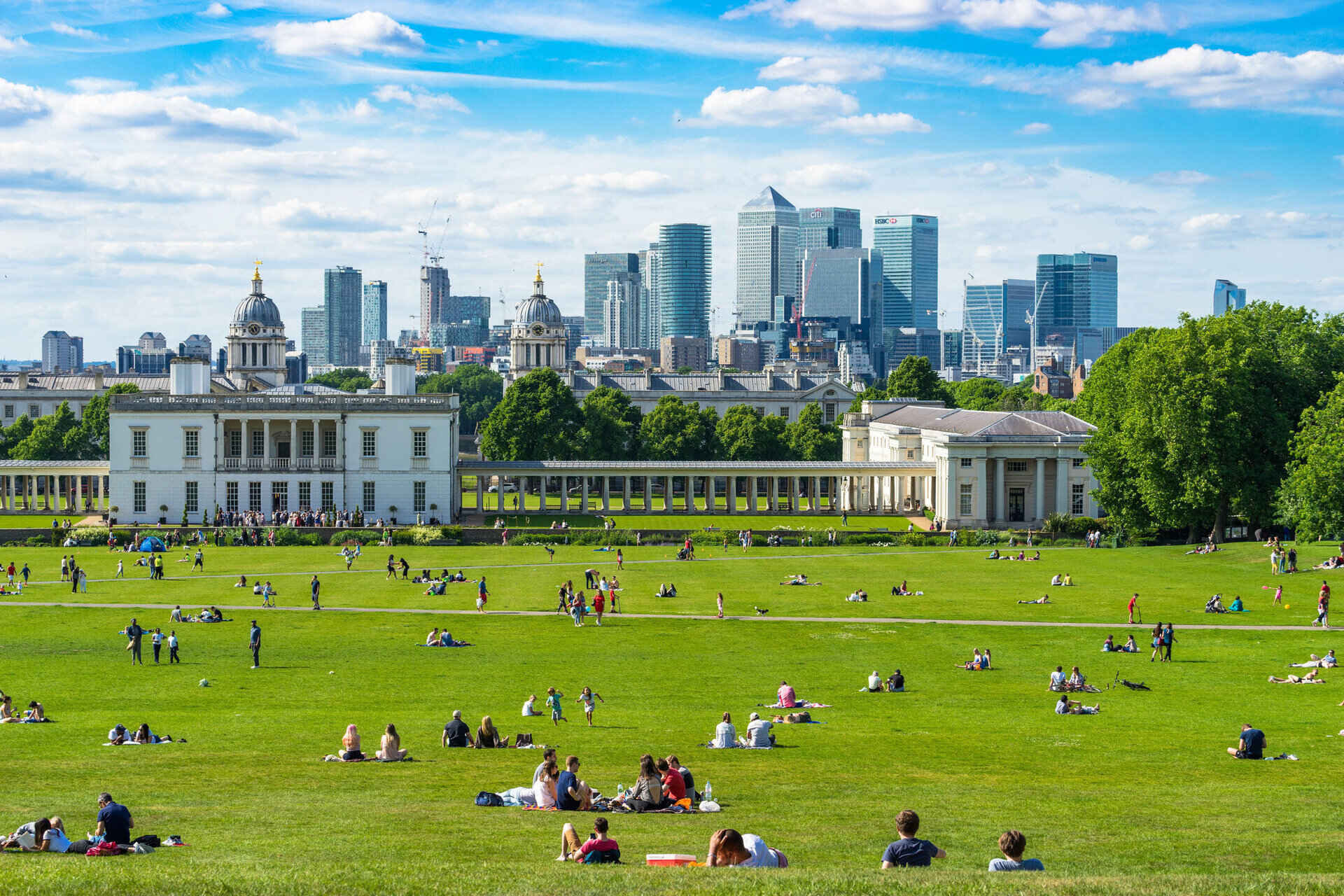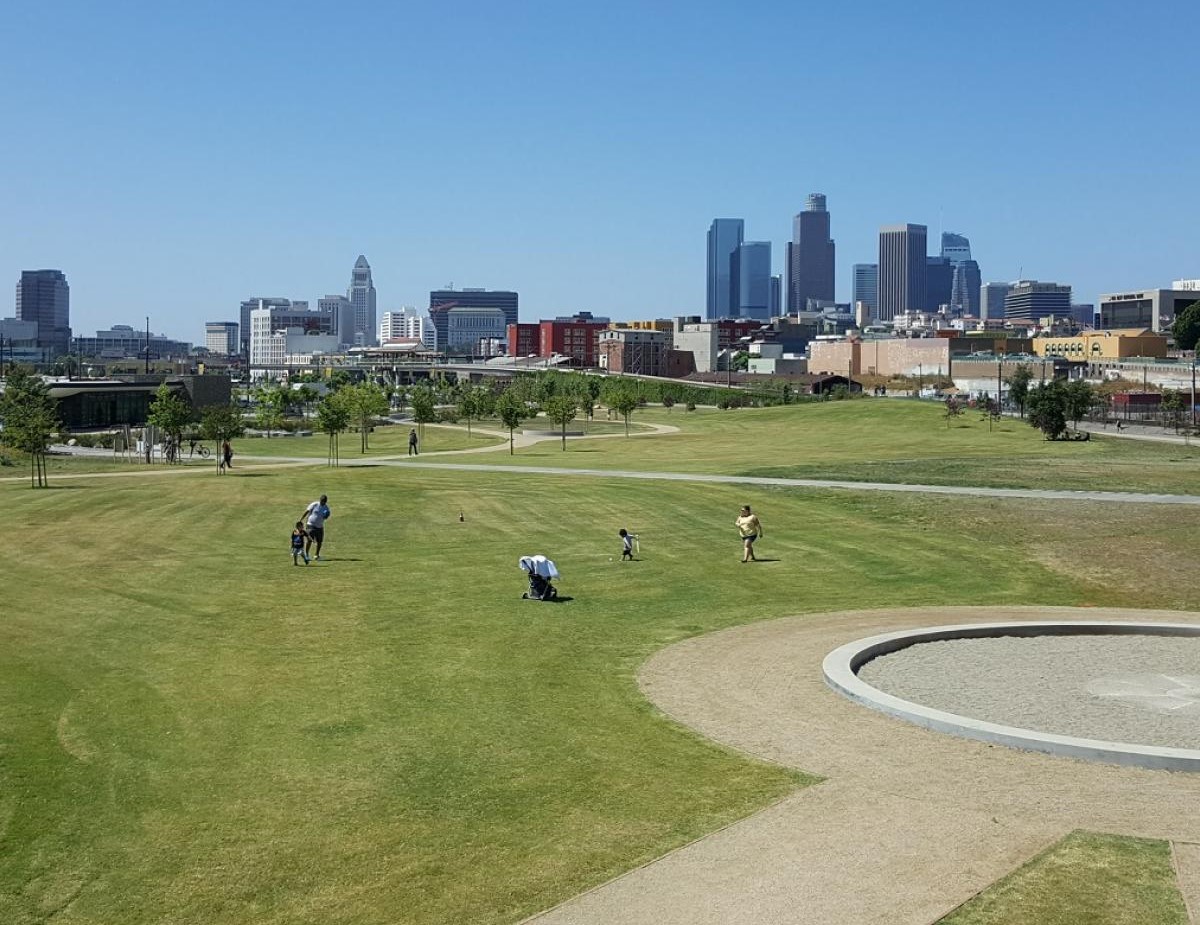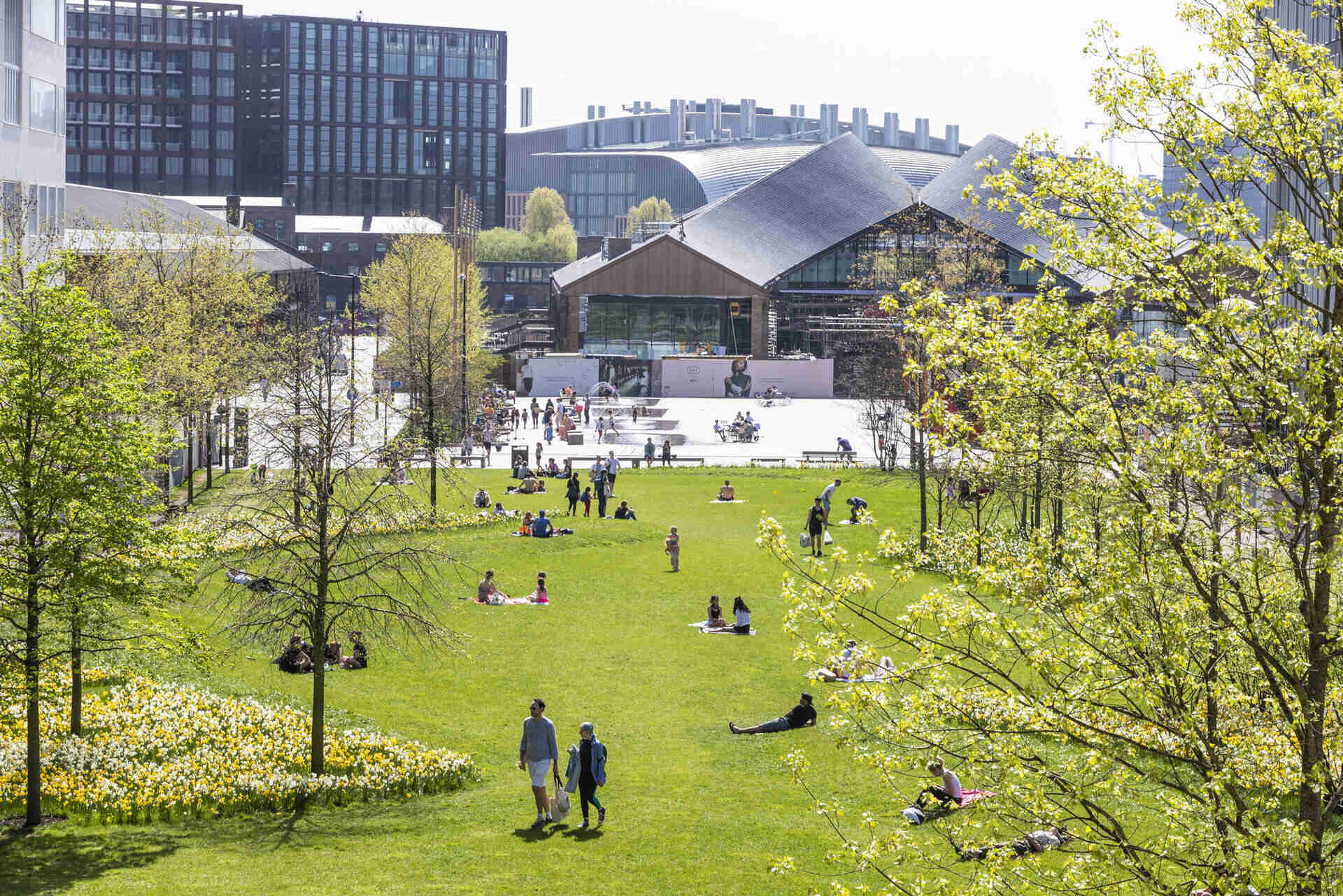Home>Garden Essentials>How Much Green Space Is In London


Garden Essentials
How Much Green Space Is In London
Modified: March 7, 2024
Discover the abundance of green space in London with beautiful gardens at every corner. Find out how much garden space London has to offer and start exploring today!
(Many of the links in this article redirect to a specific reviewed product. Your purchase of these products through affiliate links helps to generate commission for Storables.com, at no extra cost. Learn more)
Introduction
Welcome to the bustling city of London, where amidst the concrete jungle, lies a surprising amount of green space. In this article, we will explore the importance of green space in cities and specifically delve into the abundance of green spaces that can be found in London. From parks and gardens to nature reserves and green belts, London truly offers a haven of natural beauty in the midst of a vibrant metropolis.
Green spaces play a crucial role in the well-being of both individuals and communities. They provide a place of respite from the fast-paced urban life, offering opportunities for relaxation, exercise, and recreation. Physical activity is known to enhance both mental and physical health, and green spaces provide the perfect setting for outdoor activities such as jogging, cycling, and picnicking. Moreover, studies have shown that spending time in nature reduces stress levels and increases feelings of happiness and overall well-being.
But what exactly qualifies as green space? Green space refers to any area of land that is predominantly covered in vegetation, such as trees, grass, and plants. It can vary in size and can range from small pocket parks to vast expanses of forests or nature reserves. These spaces can encompass a wide variety of environments, including parks, gardens, woodlands, meadows, and even agricultural land. The key aspect is the presence of natural elements that contribute to the overall biodiversity and ecological balance of the area.
London, known for its iconic landmarks and rich history, is also home to many magnificent green spaces. The city boasts an impressive array of parks, gardens, nature reserves, and green belts, offering residents and tourists a chance to escape the urban hustle and indulge in the tranquility of nature. Let’s explore some of the most notable and beloved green spaces that London has to offer.
Key Takeaways:
- London is filled with an abundance of green spaces, from parks and gardens to nature reserves and green belts, offering a tranquil escape from the bustling city life.
- Green spaces in London, such as Hyde Park and Kew Gardens, provide opportunities for relaxation, recreation, and connection with nature, contributing to the well-being of residents and visitors.
Read more: Which London Skyscrapers Have Green Space
Importance of Green Space in Cities
Green space is not just a luxury or aesthetic addition to a city; it plays a vital role in the overall well-being of urban environments. Here are some reasons why green spaces are invaluable in cities:
- Improving Air Quality: Trees and plants in green spaces act as natural filters, absorbing harmful pollutants and producing oxygen. They help to reduce air pollution and improve the quality of the air we breathe.
- Promoting Physical and Mental Health: Access to green space encourages physical activity and provides opportunities for exercise, which is essential for maintaining good health. In addition, spending time in nature has been linked to reduced stress levels, improved mood, and enhanced mental well-being.
- Enhancing Biodiversity: Green spaces offer habitats for a wide range of plant and animal species, contributing to biodiversity and creating ecological balance. They provide shelter, food, and breeding grounds for various creatures, including birds, insects, and small mammals.
- Reducing Urban Heat Island Effect: Green spaces can help combat the urban heat island effect by reducing temperatures in cities. Trees provide shade, reducing the amount of heat absorbed by buildings and paved surfaces, thus creating a more comfortable environment.
- Promoting Community Interaction: Green spaces serve as communal areas where people can come together, socialize, and connect with nature. They provide settings for community events, gatherings, and recreational activities, fostering a sense of community and improving social cohesion.
It is evident that green spaces are essential components of a healthy and livable city. They contribute to the physical, mental, and environmental well-being of residents, creating a harmonious balance between urban development and natural ecosystems.
Now that we understand the significance of green spaces, let’s explore the various types of green spaces in London and discover their unique features and attractions.
Definition of Green Space
Before diving into the green spaces in London, let’s take a closer look at what exactly constitutes a green space. Green space, also known as open space or greenspace, refers to any area of land that is predominantly covered in vegetation, such as grass, trees, shrubs, or plants. It is an integral part of urban planning and development, designed to provide environmental, social, and recreational benefits to the community.
Green spaces can range in size and form, including small neighborhoods parks, public gardens, nature reserves, forests, meadows, and even agricultural land. These areas can be found within city limits, near residential communities, or on the outskirts of urban areas. The key characteristic of a green space is the presence of vegetation, which contributes to the overall aesthetic beauty and ecological functionality of the area.
Green spaces are not only limited to public areas or parks; they can also exist within private properties, such as residential gardens, commercial landscapes, or institutional grounds. In fact, the concept of green space extends beyond physical dimensions, encompassing the quality and accessibility of the space as well. It includes factors such as cleanliness, maintenance, safety, and the provision of amenities and facilities that enhance the overall experience of being in a green environment.
Green spaces serve multiple purposes and provide a range of benefits to both individuals and communities. These spaces offer opportunities for recreation, exercise, and relaxation by providing areas for walking, jogging, cycling, picnicking, or simply enjoying nature. They also have a positive impact on mental well-being, reducing stress levels, enhancing mood, and providing a respite from the fast-paced urban environment.
Furthermore, green spaces contribute to the overall ecological health of a city. They provide habitats for a variety of plant and animal species, promoting biodiversity and enhancing the urban ecosystem. Trees and plants in green spaces play a crucial role in mitigating air pollution, absorbing carbon dioxide, and producing oxygen, thereby improving the air quality and combating climate change.
With the understanding of what green space entails, we can now explore the diverse and remarkable green spaces that London has to offer. From grand parks and gardens to protected nature reserves and expansive green belts, London truly embraces the beauty and importance of green spaces within its urban fabric.
Green Space in London
London, a bustling metropolis known for its iconic landmarks and rich history, may not be the first place that comes to mind when you think of green spaces. However, the city surprises visitors and residents alike with its abundant and diverse array of green spaces. From expansive parks to hidden gardens, London offers a unique blend of urban life and natural beauty.
Despite the dense urban development, London has made a conscious effort to preserve and create green spaces within the city. The result is a harmonious coexistence of concrete jungles and tranquil oases. These green spaces provide a much-needed respite from the busy city streets and offer ample opportunities for relaxation, recreation, and communing with nature.
One of the most iconic green spaces in London is Hyde Park. Spanning over 350 acres, Hyde Park is not only one of the largest parks in the city but also one of the most famous. It offers a range of activities and attractions, including boating on the Serpentine, cycling, horse riding, and even open-air concerts. The park is also home to the beautiful Princess Diana Memorial Fountain and the Serpentine Gallery, showcasing contemporary art.
Kew Gardens, located in southwest London, is another exceptional green space that is not to be missed. Recognized as a UNESCO World Heritage Site, Kew Gardens is a botanical haven featuring a remarkable collection of plants from around the world. Visitors can explore stunning glasshouses, walk among towering trees, and immerse themselves in the beauty of meticulously designed gardens.
For those seeking a more natural escape, Richmond Park is the perfect destination. Spanning over 2,500 acres, Richmond Park is the largest Royal Park in London and is home to a thriving deer population. It offers expansive grasslands, woodlands, and picturesque views of the city skyline. Visitors can enjoy leisurely walks, picnics, or simply marvel at the stunning wildlife that calls the park home.
London also boasts an impressive collection of hidden gardens and squares that offer secluded retreats from the hustle and bustle of city life. Places like Kyoto Garden in Holland Park and the Roof Garden in Kensington provide serene settings for relaxation and contemplation.
Aside from these well-known green spaces, London is dotted with numerous smaller parks, community gardens, and nature reserves. These spaces, though smaller in size, are equally important in providing greenery and recreational opportunities for local residents.
One notable aspect of green spaces in London is the emphasis on inclusivity and accessibility. The city has made efforts to ensure that green spaces are available to all, regardless of social or economic backgrounds. This inclusivity is evident in the network of pocket parks, playgrounds, and community gardens that can be found throughout various neighborhoods in the city.
It is clear that London values its green spaces and recognizes the importance of balancing development with nature. The city’s commitment to creating and maintaining green spaces is not only a testament to its dedication to the well-being of its residents but also a testament to the unique and dynamic character of London itself.
In the next sections, we will explore some of the most renowned green spaces in London, including the royal parks, nature reserves, and the famous green belts that surround the city.
Parks and Gardens in London
In the heart of the bustling city, London is teeming with an impressive selection of parks and gardens that offer a tranquil and refreshing escape from the urban landscape. These green spaces provide a haven for relaxation, recreation, and appreciation of nature’s beauty. Let’s explore some of the most renowned parks and gardens in London.
Hampstead Heath, located in North West London, is a vast expanse of open greenery covering over 790 acres. This ancient parkland features diverse landscapes, including woodlands, rolling meadows, and serene ponds. Visitors can take leisurely walks, have picnics, and enjoy breathtaking views of the city from Parliament Hill. Additionally, Hampstead Heath is home to the historical Kenwood House, which houses a remarkable art collection and beautifully landscaped gardens.
Regent’s Park, situated in Central London, is a beloved green space encompassing 395 acres of well-manicured lawns, elegant flower displays, and scenic water bodies. The park is renowned for its beautiful rose gardens, boasting over 12,000 roses from more than 85 varieties. It is also home to the ZSL London Zoo, making it a popular destination for families and animal enthusiasts.
Richmond Park, one of London’s largest and most iconic green spaces, offers a unique blend of natural beauty and cultural heritage. Encompassing over 2,500 acres, this expansive park is famous for its large deer population, majestic woodlands, and sweeping grasslands. Visitors can explore the park on foot, by bike, or even on horseback, and enjoy stunning views of the city skyline from various viewpoints.
For those in search of a more botanical experience, the Chelsea Physic Garden is a hidden gem in the heart of Chelsea. Established in 1673, it is the oldest botanic garden in London. This charming garden is a living museum, featuring an impressive collection of plants with medicinal, herbal, and edible uses. Visitors can wander through themed gardens, learn about medicinal herbs, and enjoy the peaceful ambiance within its historic walls.
Another notable garden in London is the Kensington Gardens, renowned for its pristine landscapes and grand historic landmarks. The gardens are home to Kensington Palace, the official residence of the Duke and Duchess of Cambridge. Visitors can explore the Italian Gardens, which showcase stunning fountains and ornate sculptures, or take a leisurely stroll through the Serpentine Gallery and Hyde Park, which seamlessly connect to Kensington Gardens.
London’s parks and gardens offer a sanctuary of greenery amidst the hustle and bustle of city life. Whether you’re looking for vast expanses of open space, meticulously designed landscapes, or hidden retreats, you’ll find a diverse range of options to suit your preferences throughout the city. These green spaces not only provide opportunities for relaxation and recreation but also contribute to the overall well-being and aesthetic appeal of London.
In the next sections, we will delve into the royal parks, nature reserves, and green belts that further enrich London’s abundant green spaces.
One tip for finding green space in London is to visit the Royal Parks, such as Hyde Park and Regent’s Park, which offer large expanses of greenery for relaxation and recreation.
Read more: How To Freeze Green Beans From The Garden
Royal Parks in London
London is home to some of the most prestigious and expansive green spaces in the world – the Royal Parks. These historic parks, with their majestic landscapes and rich cultural heritage, offer visitors a unique opportunity to explore nature while immersing themselves in the city’s royal history. Let’s discover the magnificent Royal Parks that grace the heart of London.
Hyde Park is undoubtedly one of the most iconic and well-known Royal Parks in London. Encompassing over 350 acres, this green oasis offers a diverse range of activities and attractions. Visitors can take a leisurely stroll along the Serpentine lake, hire a rowing boat, or simply relax on the vast expanses of manicured lawns. Hyde Park is also home to the beautiful Diana, Princess of Wales Memorial Fountain and the Serpentine Gallery, which hosts contemporary art exhibitions and events throughout the year.
Regent’s Park is another magnificent Royal Park that captivates visitors with its stunning landscape and vibrant atmosphere. Boasting 395 acres of rolling lawns, formal gardens, and picturesque water bodies, Regent’s Park is a haven for nature enthusiasts and art lovers alike. The park showcases an impressive collection of over 12,000 roses from 85 different varieties in the Queen Mary’s Rose Garden. It is also home to the Open Air Theatre, providing a unique outdoor theater experience during the summer months.
Richmond Park, the largest of London’s Royal Parks, is a truly breathtaking natural wonder. Spanning over 2,500 acres, this expansive park is a designated Site of Special Scientific Interest and a National Nature Reserve. It is famous for its free-roaming deer herds, ancient oak trees, and stunning vistas. Visitors to Richmond Park can explore its numerous walking and cycling trails, enjoy a picnic in its open meadows, or simply marvel at the abundance of wildlife that calls the park home.
Other Royal Parks in London include Green Park, a tranquil retreat nestled between Buckingham Palace and Hyde Park, offering peaceful walkways and beautiful flower displays; St. James’s Park, with its idyllic lake, diverse bird population, and iconic views of Buckingham Palace; and Kensington Gardens, an enchanting park with beautifully landscaped gardens, the stunning Kensington Palace, and the Diana, Princess of Wales Memorial Playground.
What makes the Royal Parks in London truly special is the preservation and celebration of their royal history. These parks have served as hunting grounds, royal residences, and spaces for public enjoyment throughout the centuries. Today, they continue to provide a serene and picturesque backdrop for both locals and visitors to appreciate the natural beauty of the city.
London’s Royal Parks offer a perfect blend of nature, history, and culture. Whether you’re seeking a peaceful escape, a leisurely stroll, or a cultural experience, these parks provide a wealth of opportunities to explore, relax, and enjoy the splendor of London’s green spaces.
Next, we will dive into the nature reserves and green belts that surround the city, further expanding London’s range of green spaces.
Nature Reserves in London
While London is predominantly known for its bustling cityscape, it is also home to a surprising number of nature reserves that offer a haven for wildlife and a retreat for nature enthusiasts. These protected areas showcase the diversity of flora and fauna within the city and provide a unique opportunity to connect with the natural world. Let’s explore some of the noteworthy nature reserves in London.
WWT London Wetland Centre is a remarkable nature reserve nestled in the heart of London in Barnes. This urban oasis covers 105 acres and is home to a variety of wetland habitats, attracting numerous bird species. Visitors can explore the stunning boardwalks, observe wildlife from the numerous hides, and learn about wetland conservation at the visitor center. The reserve also offers educational programs and events for families and nature enthusiasts.
Rainham Marshes, located in the eastern part of London, is a sprawling nature reserve spanning over 1,000 acres. This expansive reserve comprises ancient marshland, reed beds, and mudflats, creating a rich ecosystem that supports a wide range of bird species, insects, and plants. Visitors can explore the numerous trails, visit the bird hides, and enjoy breathtaking views of the Thames Estuary. Rainham Marshes is managed by the Royal Society for the Protection of Birds (RSPB), and they offer guided walks and wildlife events throughout the year.
Woodberry Wetlands, situated in Stoke Newington, is a unique nature reserve that was once an operational water reservoir. It has been transformed into a wetland haven, encompassing open water, reed beds, and grasslands. The reserve attracts a variety of bird species, butterflies, and dragonflies, making it a haven for wildlife enthusiasts and birdwatchers. Woodberry Wetlands provides tranquil walking paths, guided walks, and educational events for visitors of all ages.
Sevenoaks Wildlife Reserve, though located just outside London in Kent, is worth mentioning for its close proximity and ecological significance. Managed by the Kent Wildlife Trust, this reserve covers 73 hectares of varied habitats, including woodland, meadows, and freshwater lakes. It is home to a wide array of bird species, mammals, and rare plant species. Visitors can explore the network of trails, participate in guided walks, and enjoy the peaceful surroundings in one of the many hides scattered throughout the reserve.
These nature reserves in London provide a unique opportunity to escape the urban landscape and immerse oneself in the beauty of the natural world. They not only serve as vital habitats for wildlife but also offer educational and recreational opportunities for visitors. Whether you’re an avid birdwatcher, a nature lover, or simply seeking a peaceful retreat, these reserves allow you to connect with nature and appreciate the incredible biodiversity that can be found within the city’s boundaries.
In the next section, we will explore the concept of green belts in London and their significance in preserving the natural surroundings of the city.
Green Belts in London
As urban areas continue to expand, cities face the challenge of preserving their natural surroundings and ensuring a balance between development and the environment. In London, the concept of green belts has played a significant role in protecting and maintaining the city’s green spaces. These green belts act as a buffer zone, preventing urban sprawl and preserving the natural landscapes surrounding the city. Let’s delve into the green belts in London and their importance in maintaining the city’s green spaces.
The London Green Belt is a continuous area of protected, predominantly agricultural land that surrounds the Greater London region. Established in 1955, it covers approximately 514,000 hectares (1.27 million acres) and extends into neighboring counties. The purpose of the green belt is to prevent unrestricted urban growth, maintain open spaces, and protect the countryside from encroachment.
Green belts are essential for several reasons. Firstly, they help to limit urban expansion and prevent the merging of neighboring towns and cities, preserving the unique identity and individual character of each area. By restricting development, green belts serve as a visual and physical separation between the urban and rural areas, preserving the scenic beauty and rural landscapes that surround the city.
Secondly, green belts provide environmental benefits. They act as valuable habitats for wildlife and contribute to biodiversity by maintaining interconnected green corridors for species to flourish. Additionally, green belts help to improve air quality by absorbing carbon dioxide and provide essential green infrastructure, such as woodlands and water bodies, which contribute to regulating temperatures and mitigating the effects of climate change.
Furthermore, green belts offer recreational opportunities for residents and visitors. They provide accessible outdoor spaces for walking, cycling, and enjoying nature. These areas offer a respite from urban areas, promoting physical and mental well-being by providing opportunities for exercise, relaxation, and connection with the natural world.
It is worth noting that green belts are not just vast expanses of untouched nature. They can also include working farms, woodlands, parks, and areas of ecological importance. The green belt designation ensures that these areas are protected from inappropriate development, while also allowing for sustainable agricultural practices and managed landscapes.
London’s green belts are carefully managed and protected through planning regulations and policies. Local authorities work in collaboration with government bodies and conservation organizations to uphold the integrity of the green belts and ensure their sustainable management for future generations.
The existence of green belts within and around London is a testament to the city’s commitment to preserving its natural heritage and creating a sustainable future. By striking a balance between urban development and the conservation of green spaces, London continues to thrive as a dynamic city while offering its residents and visitors the benefits of nature on its doorstep.
As we conclude our exploration of the green spaces in London, we can appreciate the unique blend of urbanity and nature that defines this remarkable city. The abundance of parks, gardens, nature reserves, and green belts showcases London’s commitment to green living, ecological balance, and the well-being of its inhabitants.
Now it’s time to venture out and explore these splendid green spaces in person!
Conclusion
London, known for its bustling streets, iconic landmarks, and rich history, may not be the first place that comes to mind when you think of green spaces. However, this vibrant city surprises visitors and residents alike with its abundance of parks, gardens, nature reserves, and green belts that offer a welcome respite from the urban jungle.
Throughout this article, we have explored the importance of green space in cities and delved into the numerous green spaces that London has to offer. These green spaces play a crucial role in enhancing the well-being of individuals and communities, providing areas for relaxation, recreation, and connection with nature.
London showcases a diverse range of parks and gardens, each with its own charm and character. From the grandeur of Hyde Park to the tranquility of Kensington Gardens, these green spaces offer opportunities for leisurely walks, picnics, and appreciation of nature’s beauty. The Royal Parks, with their majestic landscapes and rich history, provide a unique glimpse into the city’s royal heritage.
In addition to the parks and gardens, London boasts remarkable nature reserves that protect and celebrate the city’s biodiversity. Places like the London Wetland Centre and Rainham Marshes offer haven for wildlife and opportunities for nature enthusiasts to observe and appreciate the natural world. These reserves showcase the incredible potential for coexistence between urban development and the preservation of natural habitats.
Beyond the parks and nature reserves, London’s green belts act as buffers, preventing unrestricted urban growth and maintaining open spaces. These green belts contribute to the visual appeal of the city, create interconnected habitats for wildlife, and offer recreational opportunities for residents and visitors alike.
London’s commitment to green living is evident in the accessibility and inclusivity of its green spaces. Pocket parks, community gardens, and playgrounds provide opportunities for residents of all backgrounds to connect with nature and enjoy the benefits of greenery and fresh air.
In conclusion, London’s green spaces are invaluable assets that enhance the well-being of its residents and contribute to the city’s unique charm. These green spaces offer a sanctuary in the midst of urban life, providing a sense of tranquility, opportunities for recreation, and a connection with the natural world. Whether you’re seeking relaxation, exercise, or a moment of solitude, London’s parks, gardens, nature reserves, and green belts offer a multitude of options to explore and enjoy.
So, why not take a break from the vibrant streets and delve into the lush greenery that London has to offer? Discover the hidden gardens, take a stroll in the parks, and immerse yourself in the beauty and serenity of London’s green spaces.
Frequently Asked Questions about How Much Green Space Is In London
Was this page helpful?
At Storables.com, we guarantee accurate and reliable information. Our content, validated by Expert Board Contributors, is crafted following stringent Editorial Policies. We're committed to providing you with well-researched, expert-backed insights for all your informational needs.















0 thoughts on “How Much Green Space Is In London”